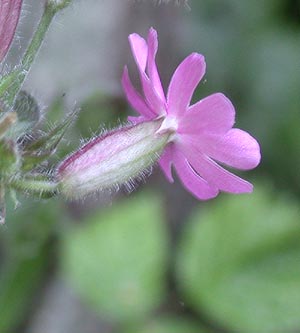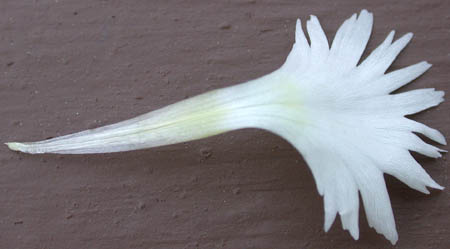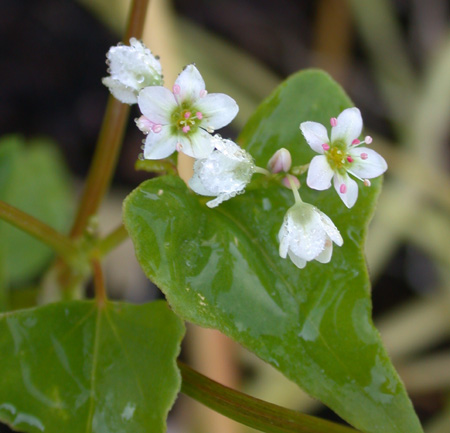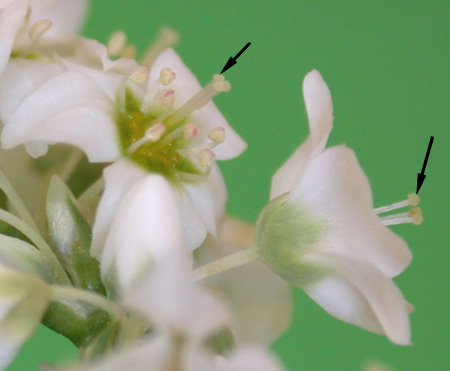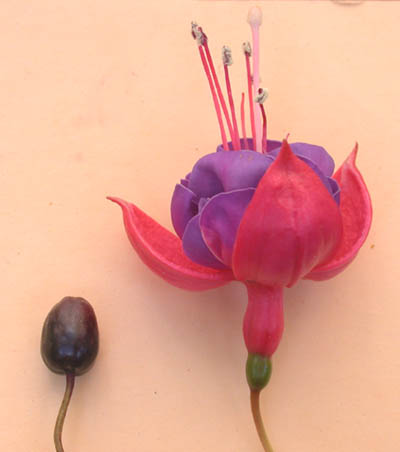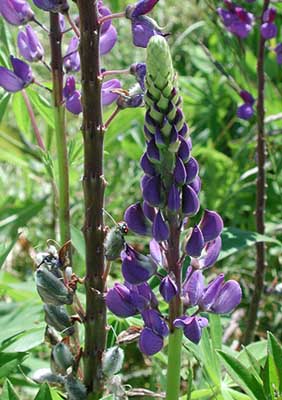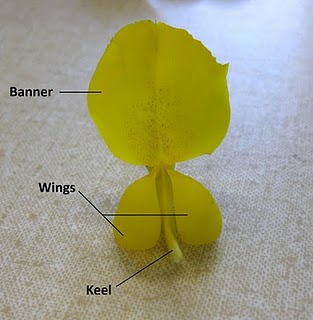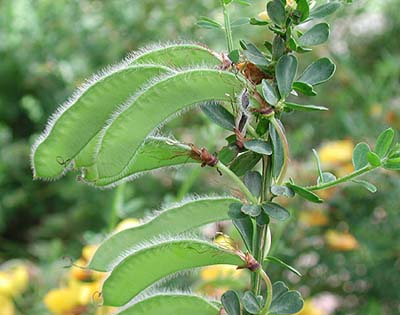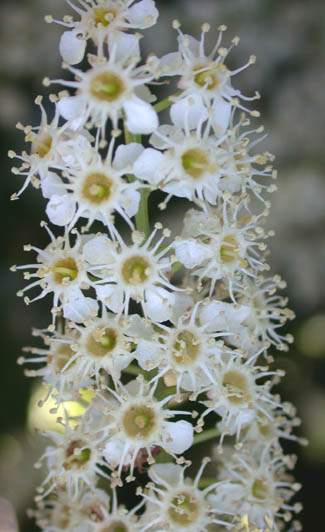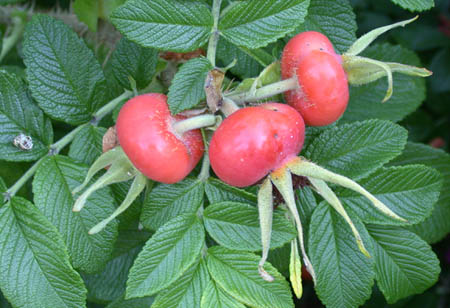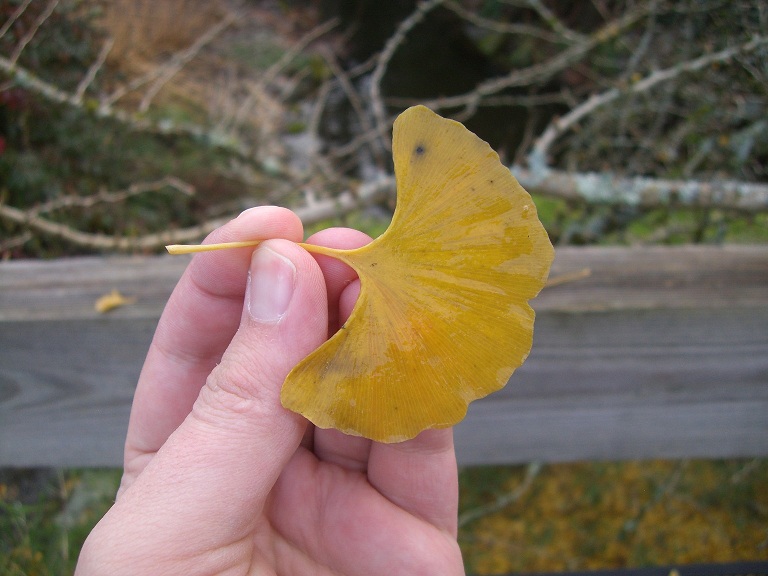 |
Take a look at these plants in the lab component!
In BIOL 324, students have ample opportunity to observe, touch and dissect plants they might not ever see outside the lab. From the Asteraceae to the Orchidaceae, and from artichokes to mint leaves, there is a huge amount of variety students encounter in this lab section.
While many lab courses around UBC just give students worksheets and calculations to do, BIOL324 provides a very emersive hands-on experience.
Below are the different families and varieties students get to see in the lab. Click on the headers to expand them (and click again to contract them). Photos are courtesy of Midy's Blog and The Vista Course Webpage.
Note: This page may take 5-10 seconds to load on the first try.
- Lab 1: Basal Angiosperms, Magnoliids and Ranunculaceae
-
Basal Angiosperms are the earliest divergent group of angiosperms. They range from the shrub-like Illicium to the aquatic Nymphaea. Basal Angiosperms also includes the famous and beautiful Magnoliids. Magnoliids are a source of many spices including nutmeg, pepper, and cinnamon. Lastly there are the beautiful (but sometimes deadly) Ranunculaceae (buttercup family).
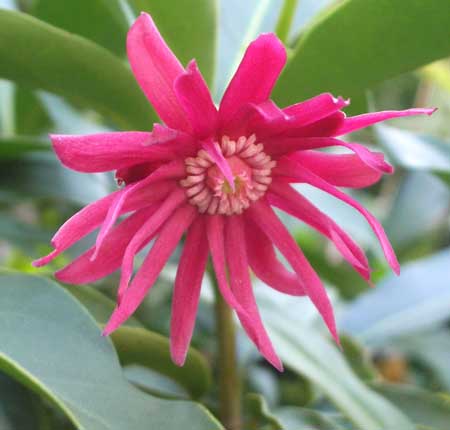
Illicium flower in bloom. Source: BIOL324 Vista Webpage.
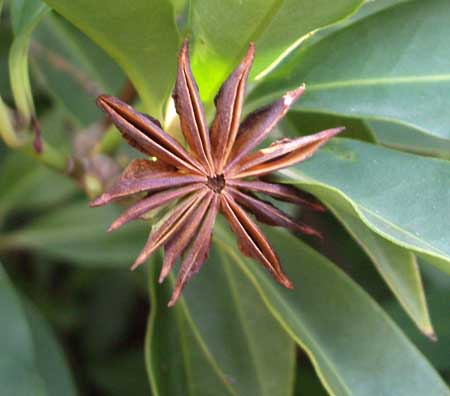
Illicum fruit. Fused 1-seeded follicles. A common spice in Chinese cooking and garam masala. Source: BIOL324 Vista Webpage.
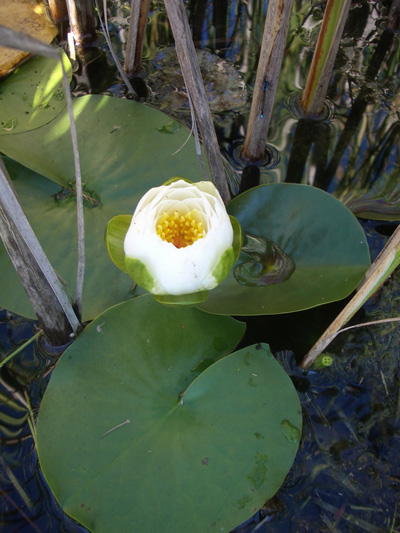
A water lily flower resting on its pads ready to be pollinated. Source: BIOL324 Vista Webpage.

Magnolia flower. Source: Midy's Blog
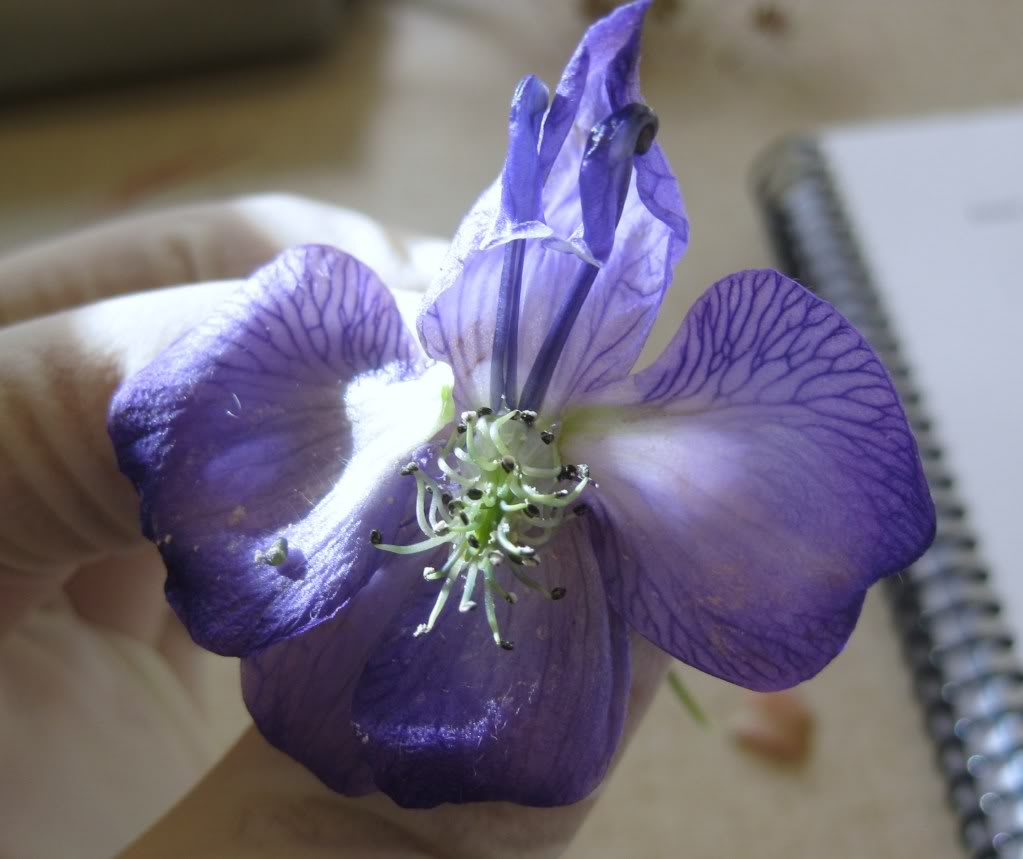
Aconitum flower. All parts of the flower are extremely poisonous. Its nicknames wolfsbane, women's bane and Devil's helmet tell the whole story. Source: Midy's Blog
-
Lab 2: Caryophyllaceae, Polygonaceae, Onagraceae
- Lab 3: Fabaceae, Rosaceae
- Lab 4: Brassicaceae, Malvaceae, Ericaceae
-
Brassicaceae provides lots of important economic plants such as broccoli, cabbage, mustard and radish. They were previously called Cruciferae due to their characteristic 4-petal flowers that are shaped like a cross. Their silicle and silique fruit-types are another defining characteristic.

A typical crucifix shaped flower. Source: BIOL324 Vista Webpage
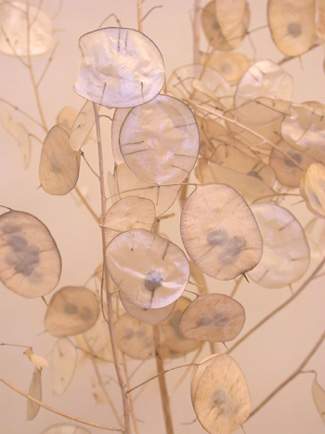
Silicle fruit. These are common as "fake ornamentals". Source: BIOL324 Vista Webpage
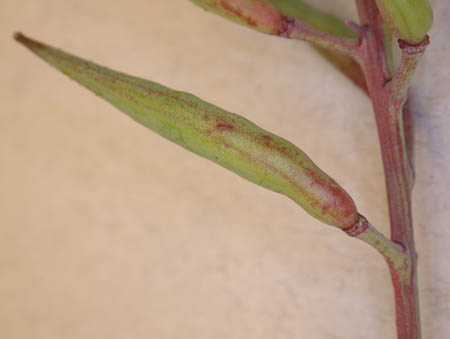
Silique fruit. (A way to remember silique vs. silicle is that silique = sleek). Source: BIOL324 Vista Webpage.
- Malvaceae is a common ornamental plant; however, it is extremely important economically due to cotton (Gossypium).
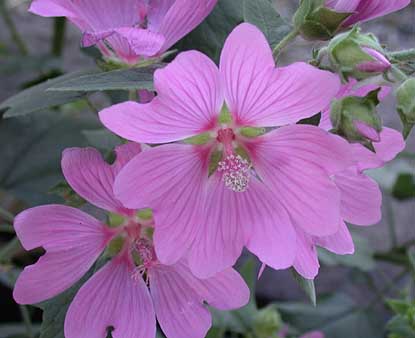
Lavatera flower.
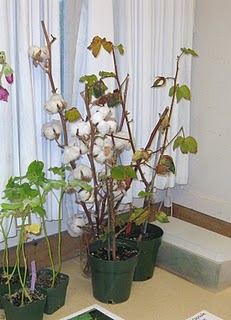
The cotton plant, from the genus Gossypium. Source: Midy's blog.
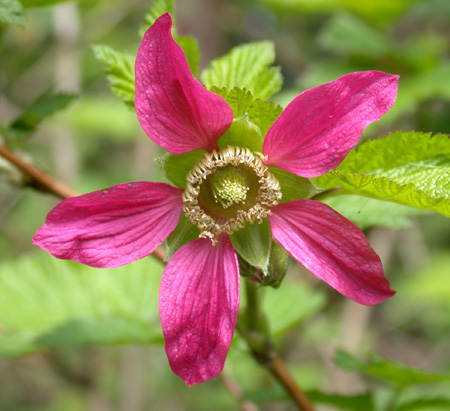
Salmonberry flower (Rubus spectabilis). Source: BIOL324 Vista Webpage.
- Ericaceae are common shrubs around BC, but includes many ornamentals, blueberries and cranberries as well.
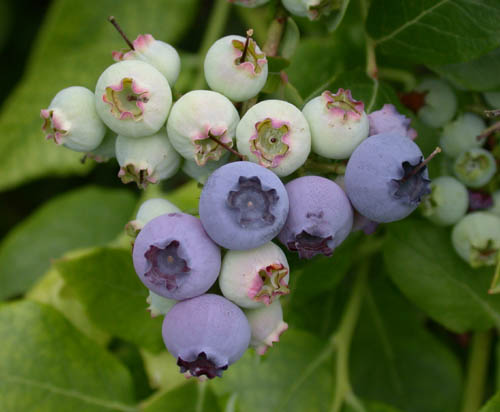
Blueberry fruit in the genus Vaccinium. Source: BIOL324 Vista Webpage.
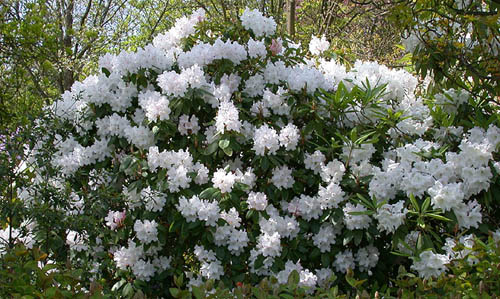
Rhododendron, a common garden plant. Source: BIOL324 Vista Webpage.

A close up of the Rhododendron flower. Source: BIOL324 Vista Webpage.
- Lab 5: Lamiaceae, Plantaginaceae, Scrophulariaceae
Lamiaceae, the mint family, contains many herbs that are used in cooking. A defining characteristic of this family is its square stem.
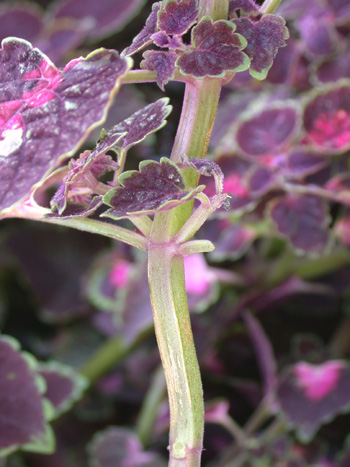
Square stem on a plant. Source: BIOL324 Vista Webpage

Salvia, a somewhat controversial "drug". Source: BIOL324 Vista Webpage
-
Plantaginaceae/Scrophulariaceae used to be considered one large family and has recently been divided into a number of separate families. Plantaginaceae flowers are very zygomorphic and includes the snapdragon family. Scrophulariaceae flowers are bilabiate and includes the figworts.

Antirrhinum inflorescence. Source: BIOL324 Webpage.
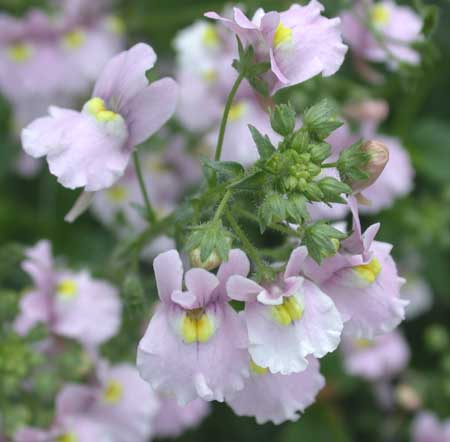
Nemesia flowers. Note the bilabiate-ness. Source: BIOL324 Webpage.
- Lab 6: Boraginaceae, Solanaceae, Apiaceae
-
Boraginaceae is not a very large family in BC, but has a few ornamentals. A characteristic of this family is the helicoid cymose inflorescence and is often very hairy.
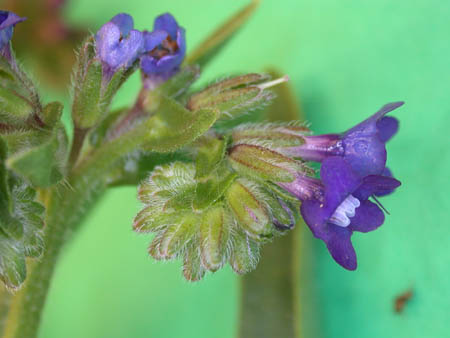
Helicoid cyme. Source: BIOL324 Vista Webpage
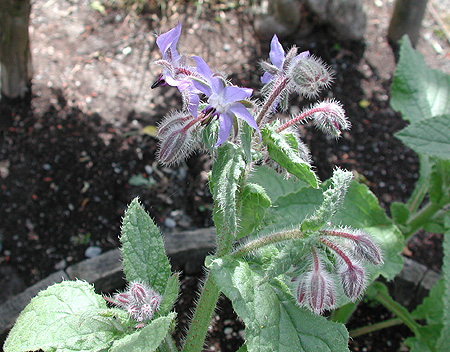
This plant is very hairy. Source: BIOL324 Vista Webpage
Solanaceae, the potato family, is not a huge family in BC wild flora, but it contains many important crops (potato, eggplant, tomato, red, yellow and green peppers, tomatillo) and drugs such as nicotine. Many species also produce poisonous alkaloids that are used for many purposes.

Tobacco plant. Many plants in this genus, Nicotiana, are grown for their leaves. Source: BIOL324 Webpage.
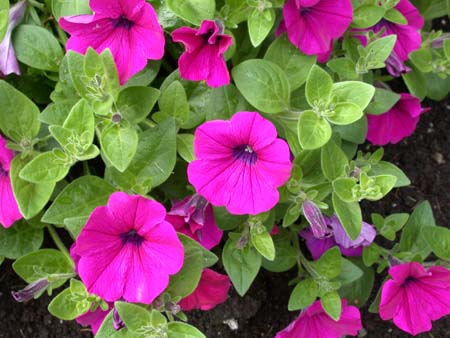
Petunia flowers. Grown for ornamental purposes Source: BIOL324 Webpage.
The Apiaceae (carrot) family is easy to recognize for its umbellate inflorescence (looks like an umbrella). Many crops are cultivated from this family including Anethum (dill), Petroselinum (parsley), Apium (celery), Daucus (carrot) and Pastinaca (parsnip). The compressed schizocarp are characteristic of this family.

A carrot from Daucus which is just a large storage root. Source: BIOL324 Webpage.
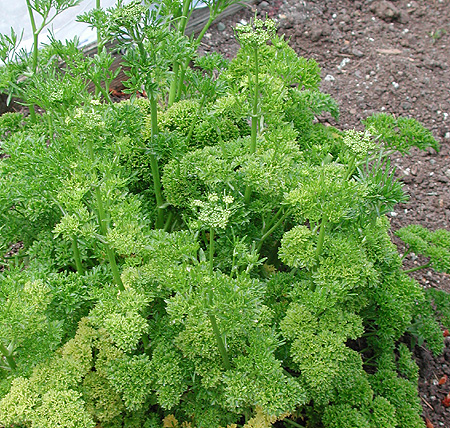
Parsley plant (Petroselinum). Source: BIOL324 Webpage.

Two mericarps make up a schizocarp. Source: BIOL324 Webpage.
- Lab 7: Asteraceae
Asteraceae, or the sunflower family, is the largest family in the world. It was previously known as Compositae due to its composite inflorescence where seemingly one flower is in fact made up of many smaller flowers.

Cirsium (thistle) from the Cynareae tribe in the Asteraceae family. This tribe's noticeable characteristic is its spines and the style has a ring of hair. Source: BIOL324 Vista Webpage
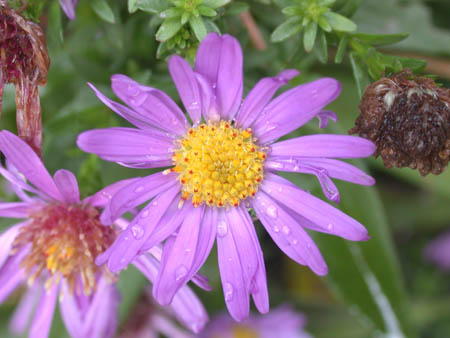
Aster from the tribe Astereae. Note the pink "petals" are in fact many ray florets surrounding the compound inflorescence. Source: BIOL324 Vista Webpage
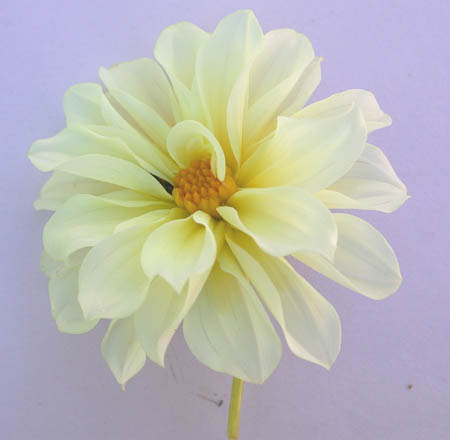
Dahlia from the tribe Heliantheae. Source: BIOL324 Vista Webpage
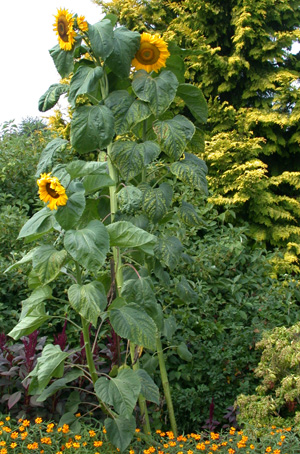
A typical sunflower, Helianthus, from the tribe Helianthae. Source: BIOL324 Vista Webpage
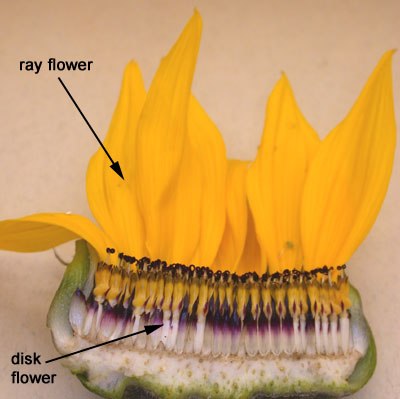
A close-up cross-section of the compound inflorescence labelling ray and fisk flowers. Source: BIOL324 Vista Webpage
- Lab 8: Lily-like Monocots, Iridaceae, Orchidaceae
The lily-like monocots were traditionally put into two main families, Liliaceae and Amaryllidaceae. This has since been revised and the lily-like plants have been assigned to many smaller families.

A white lily flower. Source: BIOL324 Vista Webpage
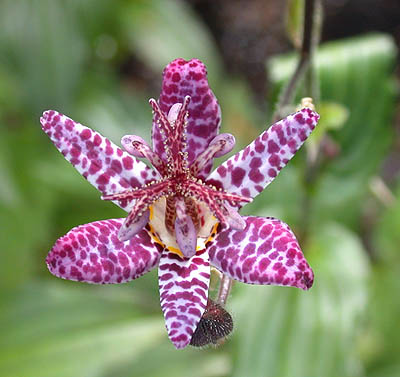
A toad lily (Tricyrtis) with three pistils and six stamens clearly visible. Source: BIOL324 Vista Webpage
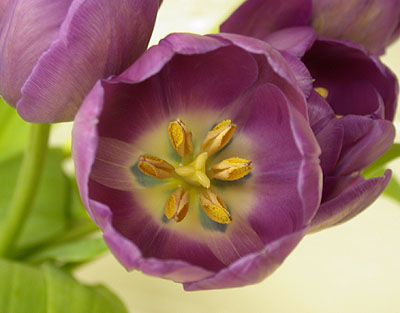
Tulip (Tulipa); three pistils and six stamens again clearly visible. Source: BIOL324 Vista Webpage
The Asparagales includes the onions and leeks and many other important crops.
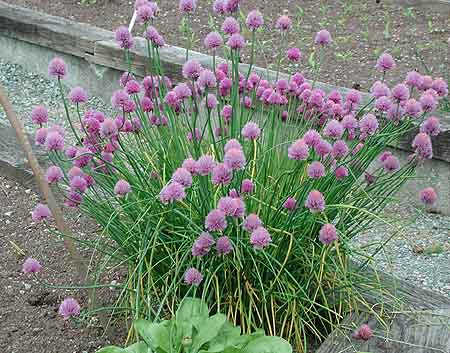
Allium schoenoprasum (leek). Source: BIOL324 Vista Webpage
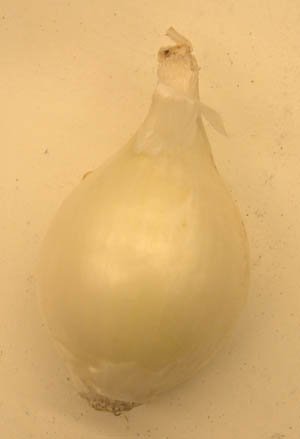
Allium cepium (Pearl Onion). Source: BIOL324 Vista Webpage
-
The Orchidaceae is the second largest family in the world; however, when all the species are identified, it will probably surpass Asteraceae as the largest. The flowers "twist" during development to present the top of the flower at the bottom as a pollinator platform. This platform is called the labellum. Above the labellum is the column, a fusion of the stigma, style and stamens. The pollen sticks together at the end of the column in large masses called Polliniums that then stick to pollinators via a sticky viscidium.
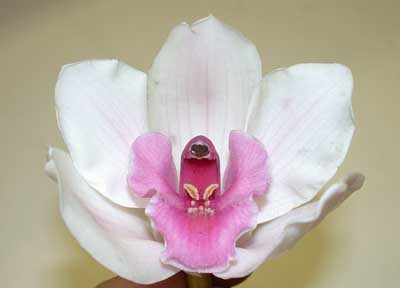
A beautiful orchid flower (Cymbidium). Source: BIOL324 Vista Webpage
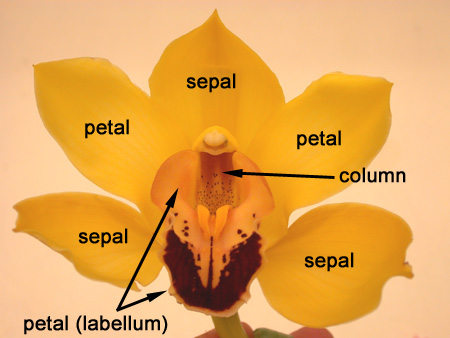
The different parts of the orchid flower labelled. Source: BIOL324 Vista Webpage
- Lab 9: Poaeceae, Cyperacese, Juncaceae
-
Sedges have edges, rushes are round, grasses are hollow from the tip to the ground. Although this is a good way to identify which family a plant belongs to, it does not pay tribute to the huge diversity within these three families. The Poaceae (grass family) is, by far, the most economically important family in the world. It is responsible for wheat (Triticum), bamboo, sugar (Saccharum), Zea (maize and corn), rice and it is indirectly responsible for our livestock, as it provides them with hay and grains for food. A defining characteristic of this family is the spike to spikelet to floret inflorescence.
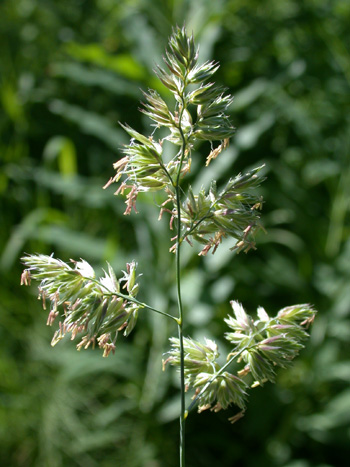
Inflorescence showing dangling stamens for wind pollination, spikes, spikelets and open florets. Source: BIOL324 Vista Webpage

Bamboo is an important component in construction and food in Asia. Source: BIOL324 Vista Webpage
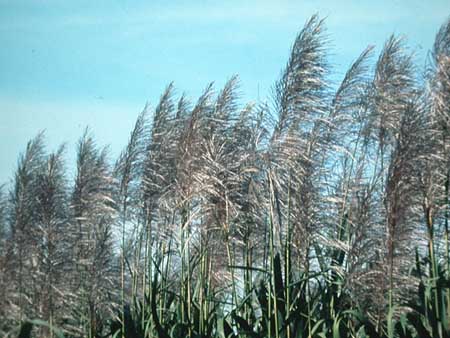
Sugar is an extremely important crop, with many industries using it. Source: BIOL324 Vista Webpage
Sedges are common in BC and a defining characteristic are their three angled stems. Many plants are eaten by grazing livestock.
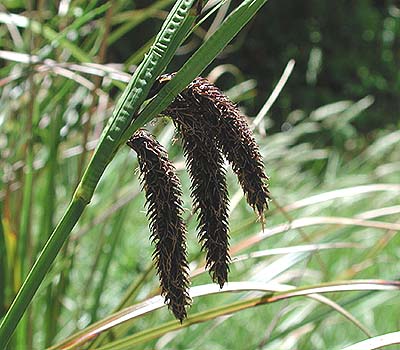
A Carex inflorescence. Source: BIOL324 Vista Webpage
-
Juncaceae is a small family in BC and are often found in wet habitats. A common characteristic is the appearance of the stem continuing up with the inflorescence sticking out the side. But the continuation of the stem is actually an involucral bract sticking up.

Labelled involucral bract. Source: BIOL324 Vista Webpage
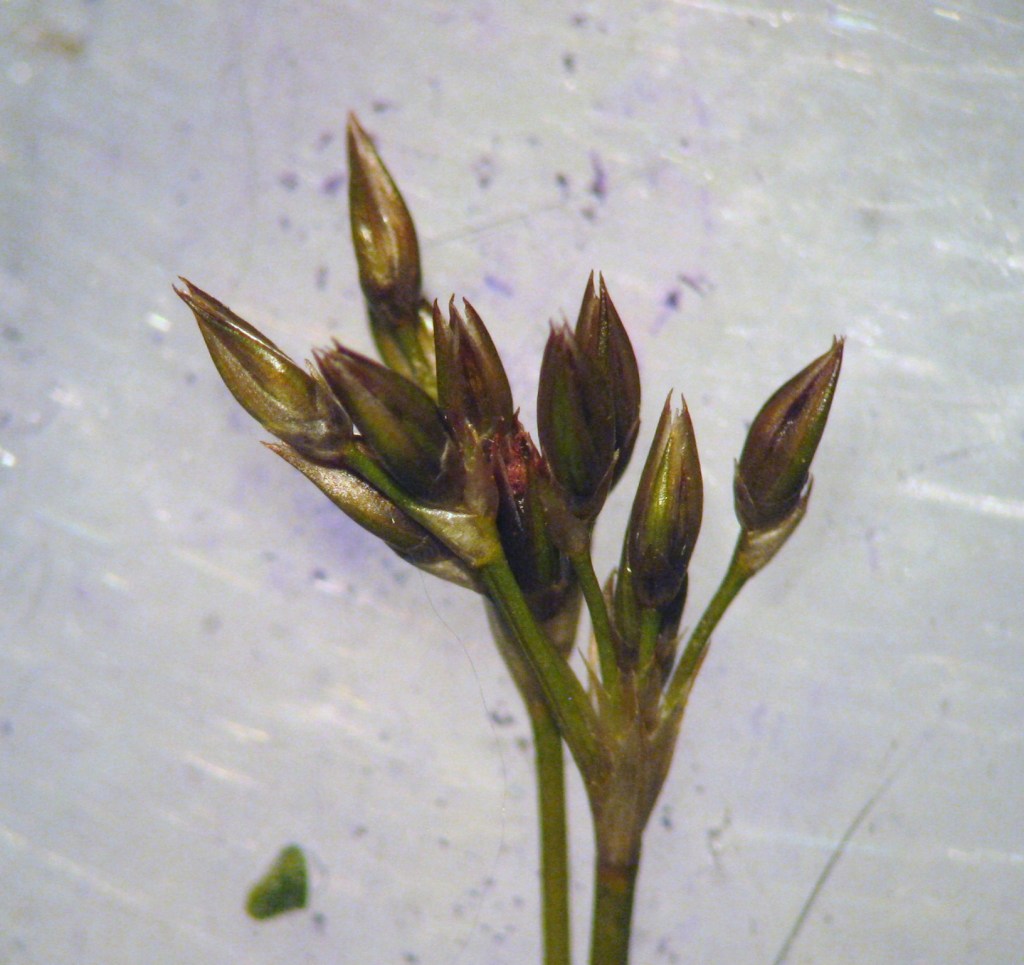
A close up of the inflorescence of Juncaceae. Source: BIOL324 Vista Webpage
|
 |
|






